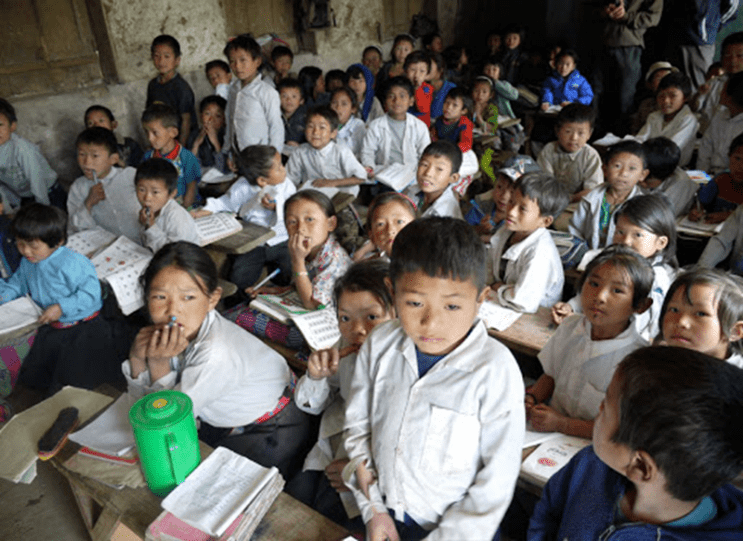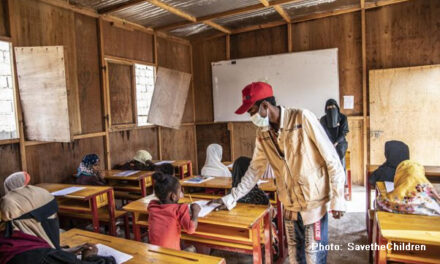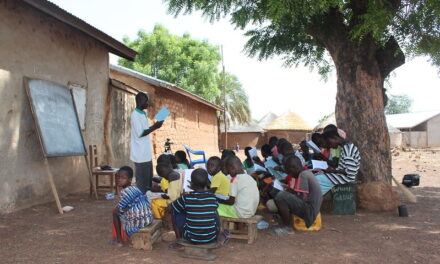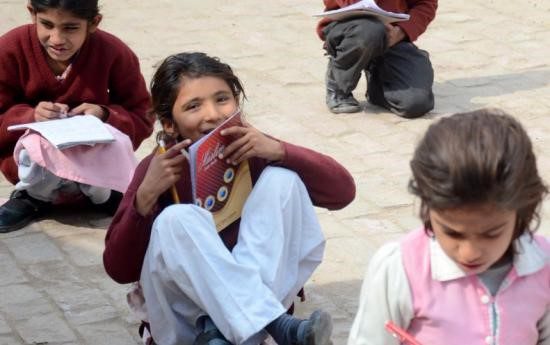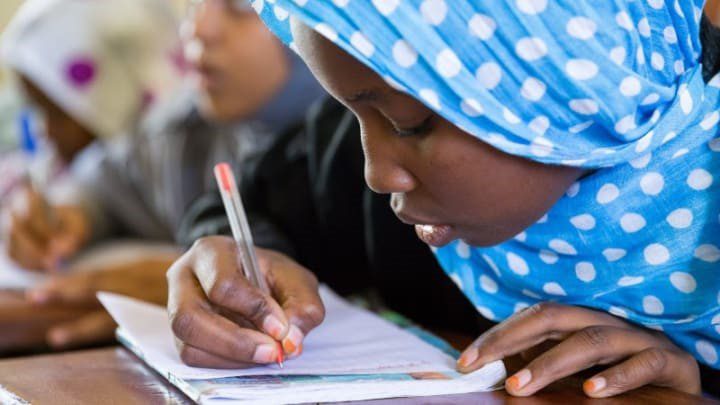This article was written by Dr Ram Ashish Giri and Dr Saraswati Dawadi. Ram Ashish Giri teaches and researches issues related to ELICOS courses, TESOL, language testing, and language (education) policy at Monash University, Australia. Saraswati Dawadi is a lecturer at Tribhuvan University, Nepal. She researches and publishes on English language education related issues.
Educational institutions in the world have been forced to shut down for nearly four months; global coronavirus infections surged past 15 million on 22 July 2020. According to a UNESCO estimate, around 1.6 billion children across 191 countries have been severely impacted by the closure of educational institutions. Sadly, new cases of coronavirus are still rapidly increasing in many countries, though certain countries have witnessed a gradual fall. With the first wave of the virus still to peak in Nepal, the Government of Nepal has made a surprise move to lift the lockdown altogether on 21 July. However, it remains uncertain when schools will open, and students can attend face-to-face classes.
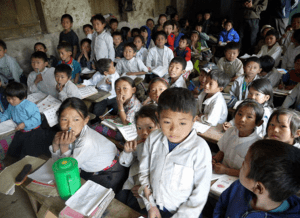 School closures in Nepal have left around 9 million children out of school. In response to the disruption of education, the Ministry of Education, Science, and Technology (MOEST), in partnership with various national and international organisations, has developed a five-modality educational programme. To ensure access to quality education for all, and with the objective of leaving no student behind, the programme aims to reach out to students throughout Nepal. To minimise the impact on the continuity of learning, the programme delivers lessons and learning materials in the following five ways:
School closures in Nepal have left around 9 million children out of school. In response to the disruption of education, the Ministry of Education, Science, and Technology (MOEST), in partnership with various national and international organisations, has developed a five-modality educational programme. To ensure access to quality education for all, and with the objective of leaving no student behind, the programme aims to reach out to students throughout Nepal. To minimise the impact on the continuity of learning, the programme delivers lessons and learning materials in the following five ways:
- For the students who do not have access to any technological tools and devices, the MOEST, in conjunction with the Centre for Education and Human Resource Development (CEHRD), will deliver textbooks and self-study materials and mobilise available local human resources (teachers, parents, volunteers, etc.) to conduct learning while maintaining social distancing.
- For the students who have access to FM radio, in addition to the first provision above, the provincial and local radio operators will be mobilised to deliver lessons through FM radio channels.
- For the students who have access to television, the provincial and local governments will mobilise all available educational expertise and resources to design and deliver lessons on the materials mentioned in the first two provisions above through TV channels. In addition, the concerned educational outlets and teachers will manage and monitor the lesson delivery processes.
- For the students who have computers without (easy) access to the internet, in addition to the three provisions above, the MOEST and CEHRD will make all online lessons available for offline access through CDs, pen drives or hard drives. Their learning activities will be managed and monitored by the concerned teachers.
- Finally, for the students who have access to the internet, the central, provincial and local government will make available all provisions mentioned above plus open access to the central portal of online and YouTube lessons which will be digitally managed and monitored by the ministry.
The five-modality educational response, innocent though it may seem, is problematic. Our understanding is that the very programme which targets engaging and including all stakeholders in education may potentially be exclusionary – and may become the basis for further widening the gap between underprivileged and privileged groups as there exist multidimensional inequalities among students. While the majority of students have access to learning only through traditional means, the privileged groups of students benefit more because they have access to all five modes of learning. The existing technological discrepancies, the digital divide, socio-economic divide, and a divide in terms of parents’ literacy rate are inequitable and exclusionary which are set to widen the gaps in access and quality of education.
Indeed, it seems that the MOEST response to education is set to favour the most privileged students, widening the gap even further. Although the new modality of education is considered a positive step that can benefit students, as international organisations such as the World Bank and UNESCO are concerned, this might become a new educational tool to cause inequality and exclusion. The disadvantaged groups of children are already severely affected socio-economically, as their parents lose income from the economic shutdown. Because of the new educational response, they ‘are at risk of falling on the wrong side of the digital divide’, further impacting their education and potential to succeed in life. In the Nepalese media, the news of parents selling their assets to afford to buy a smartphone or other gadgets so that their children can have access to the new modality of lesson delivery has become common. This will only push them backward economically.
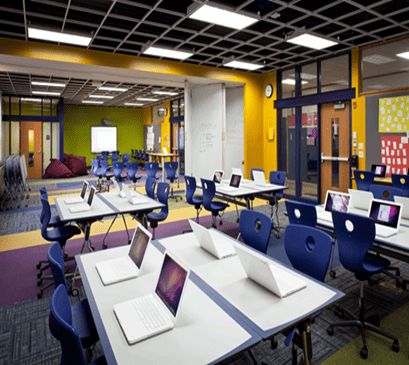 The first three modalities, for example, are a collaborative design for disadvantaged groups, with a limited provision of face-to-face personal support by teachers and community. These non-technical partnerships with community groups aim at engaging communities for sustainable and distributed learning support. However, the government does not seem to have proper strategies to mobilise the community. For instance, the first modality of no-tech, print-based response aims to ensure that learning takes place in resource-deprived areas. However, its effectiveness largely depends on the ability of learners to read the self-instructional material, otherwise active learning may not take place. In the absence of proper guidance to children, traditional textbooks and/or materials alone may fail to ensure active learning among children, as such materials usually focus on an explanation of facts and concepts. What is required in such situations is self-instructional materials that not only provide information but also clearly define what needs to be learned, explain, question, give examples, set learning tasks, answer students’ questions, allow them to do self-assessment and give study advice. The materials needs to provide a viable self-study plan for the student. However, it is unclear whether or what kind of self-study materials are being produced.
The first three modalities, for example, are a collaborative design for disadvantaged groups, with a limited provision of face-to-face personal support by teachers and community. These non-technical partnerships with community groups aim at engaging communities for sustainable and distributed learning support. However, the government does not seem to have proper strategies to mobilise the community. For instance, the first modality of no-tech, print-based response aims to ensure that learning takes place in resource-deprived areas. However, its effectiveness largely depends on the ability of learners to read the self-instructional material, otherwise active learning may not take place. In the absence of proper guidance to children, traditional textbooks and/or materials alone may fail to ensure active learning among children, as such materials usually focus on an explanation of facts and concepts. What is required in such situations is self-instructional materials that not only provide information but also clearly define what needs to be learned, explain, question, give examples, set learning tasks, answer students’ questions, allow them to do self-assessment and give study advice. The materials needs to provide a viable self-study plan for the student. However, it is unclear whether or what kind of self-study materials are being produced.
Similarly, the second and third modalities sound problematic. It is worth pointing out that even when radio or television lessons reach young children, active learning is unlikely to happen without sufficient support from their parents at home. Since many parents do not have any experience of schooling (and most cannot read and write at all), they are unable to support home-based learning through the current intended media channels. Furthermore, parents from poor backgrounds often do not have the time and resources to support children’s learning. In addition to this, given the multilingual societies, it is not sure whether such media can provide equal opportunities to students (and parents) from a different linguistic background. Therefore, approaches using media channels need to take account of multiple constraints that families in those rural areas are facing, including identifying more creative solutions to enrich home-based learning, even for illiterate parents. One promising approach could be unlocking the potential for parents to support their children’s learning by providing them proper guidance on how to support children’s learning; considering their language barriers, literacy level, and time constraints.
The last two modalities, along with the support of the first three, are likely to widen privileged groups’ access to and participation in education through what is also known as an alternative or parallel educational practice. This is likely to cause further educational inequity and socio-economic exclusion. Indeed, the current ICT infrastructure and the distribution of access in the urban and rural areas have created two tiers of inequalities among Nepalese citizens, i.e. between students who live in an urban area and those from a rural area, and between the rich and poor who can barely afford to access the internet.
To reiterate, the Nepalese Government’s policies on education need to accelerate progress towards fairer educational representation and participation with a focus on making education accessible for all students, not just those from the privileged communities. In order to ensure that students of all backgrounds are supported into and through education, the learning resources, facilities, and opportunities must be evenly distributed. Unfortunately, inequity and exclusion remain a persistent issue in Nepal.
Students from underrepresented and underprivileged groups continue to fall behind as they do not have the same level of access to the required resources and opportunities. Yet, the new five-modality online education which is supposedly a programme to provide access to learning in the advent of the COVID-19 pandemic is set to create further inequity and exclusion because there are incomparable differences in the facilities available between urban areas and the rural/ remote areas. Therefore, the Government needs to identify equitable and effective solutions in their response to COVID-19 to avoid the pandemic further exacerbating inequalities.

